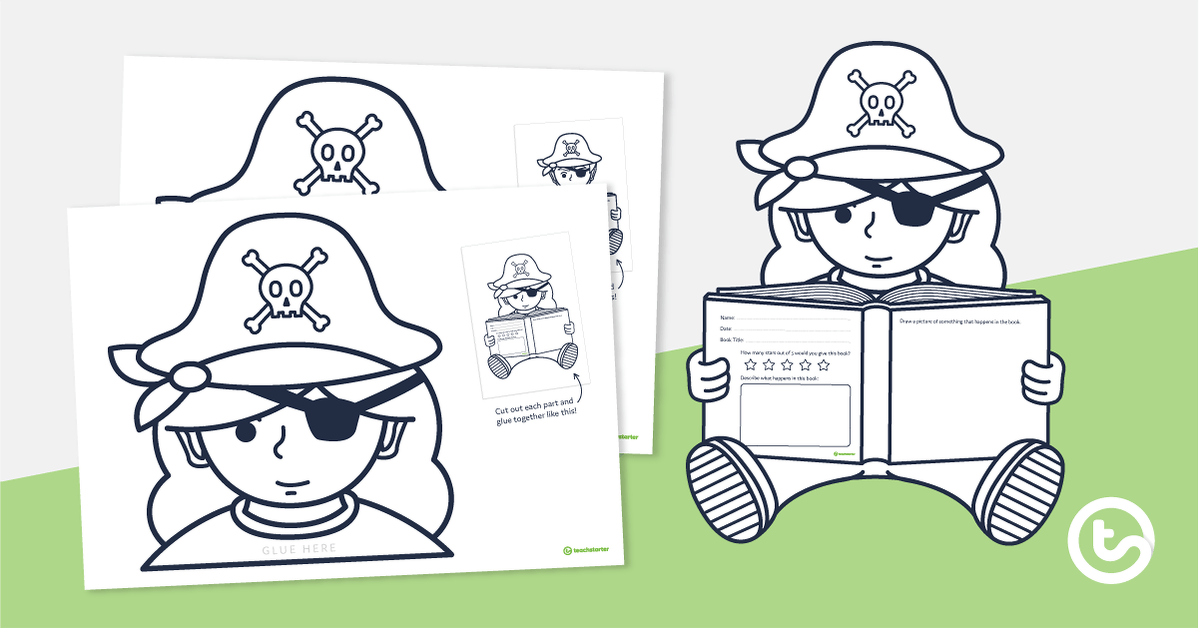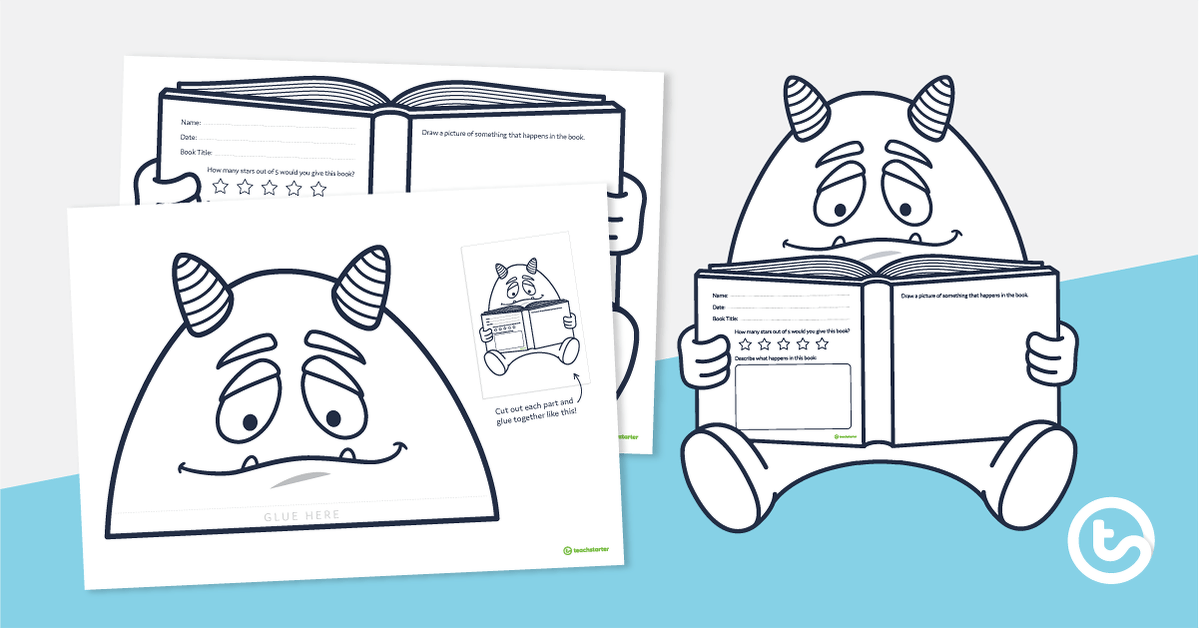Year 5
英语课程是建立在三个我nterrelated strands of language, literature and literacy. Teaching and learning programs should balance and integrate all three strands. Together, the strands focus on developing studentsâ knowledge, understanding and skills in listening, reading, viewing, speaking, writing and creating. Learning in English builds on concepts, skills and processes developed in earlier years, and teachers will revisit and strengthen these as needed.
In Years 5 and 6, students communicate with peers and teachers from other classes and schools, community members, and individuals and groups, in a range of face-to-face and online/virtual environments.
Students engage with a variety of texts for enjoyment. They listen to, read, view, interpret and evaluate spoken, written and multimodal texts in which the primary purpose is aesthetic, as well as texts designed to inform and persuade. These include various types of media texts including newspapers, film and digital texts, junior and early adolescent novels, poetry, non-fiction and dramatic performances.
The range of literary texts for Foundation to Year 10 comprises Australian literature, including the oral narrative traditions of Aboriginal and Torres Strait Islander Peoples, as well as the contemporary literature of these two cultural groups, and classic and contemporary world literature, including texts from and about Asia.
Literary texts that support and extend students in Years 5 and 6 as independent readers describe complex sequences, a range of non-stereotypical characters and elaborated events including flashbacks and shifts in time. These texts explore themes of interpersonal relationships and ethical dilemmas within real-world and fantasy settings. Informative texts supply technical and content information about a wide range of topics of interest as well as topics being studied in other areas of the curriculum. Text structures include chapters, headings and subheadings, tables of contents, indexes and glossaries. Language features include complex sentences, unfamiliar technical vocabulary, figurative language, and information presented in various types of graphics.
Students create a range of imaginative, informative and persuasive types of texts including narratives, procedures, performances, reports, reviews, explanations and discussions.
(source:www.australiancurriculum.edu.au)
Achievement Standard
Receptive modes (listening, reading and viewing)
By the end of Year 5, students explain how text structures assist in understanding the text. They understand how language features, images and vocabulary influence interpretations of characters, settings and events.
When reading, they encounter and decode unfamiliar words using phonic, grammatical, semantic and contextual knowledge. They analyse and explain literal and implied information from a variety of texts. They describe how events, characters and settings in texts are depicted and explain their own responses to them. They listen and ask questions to clarify content.
Productive modes (speaking, writing and creating)
Students use language features to show how ideas can be extended. They develop and explain a point of view about a text, selecting information, ideas and images from a range of resources.
Students create imaginative, informative and persuasive texts for different purposes and audiences. They make presentations which include multimodal elements for defined purposes. They contribute actively to class and group discussions, taking into account other perspectives. When writing, they demonstrate understanding of grammar using a variety of sentence types. They select specific vocabulary and use accurate spelling and punctuation. They edit their work for cohesive structure and meaning.
(source:www.australiancurriculum.edu.au)
-

teaching resource
Glorious Grammar Volume 1 - Worksheet Book
50 activities in one booklet which all revolve around learning grammar in the classroom.
-
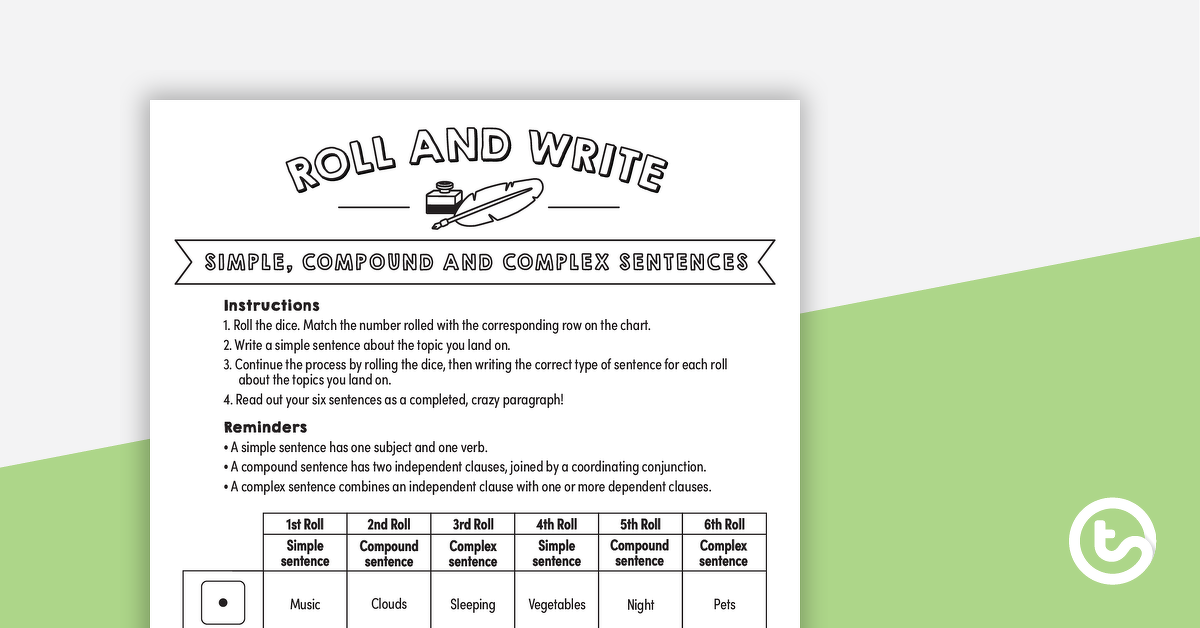
teaching resource
Roll and Write – Simple, Compound and Complex Sentences
An interactive activity to help students practise writing simple, compound and complex sentences.
-

teaching resource
Components of Poetry PowerPoint
An editable PowerPoint to use when teaching the essential components of poetry.
-
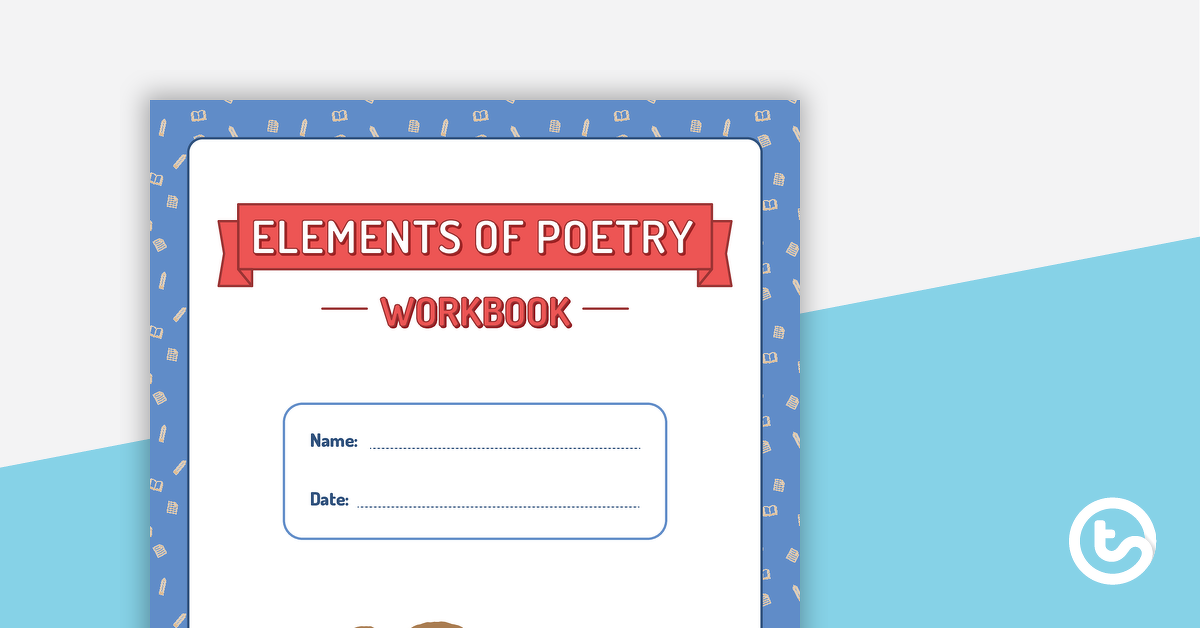
teaching resource
Elements of Poetry Workbook
A workbook to help students explore common elements of poetry.
-

teaching resource
Sound Devices PowerPoint
An editable PowerPoint to use when teaching sound devices to your students.
-
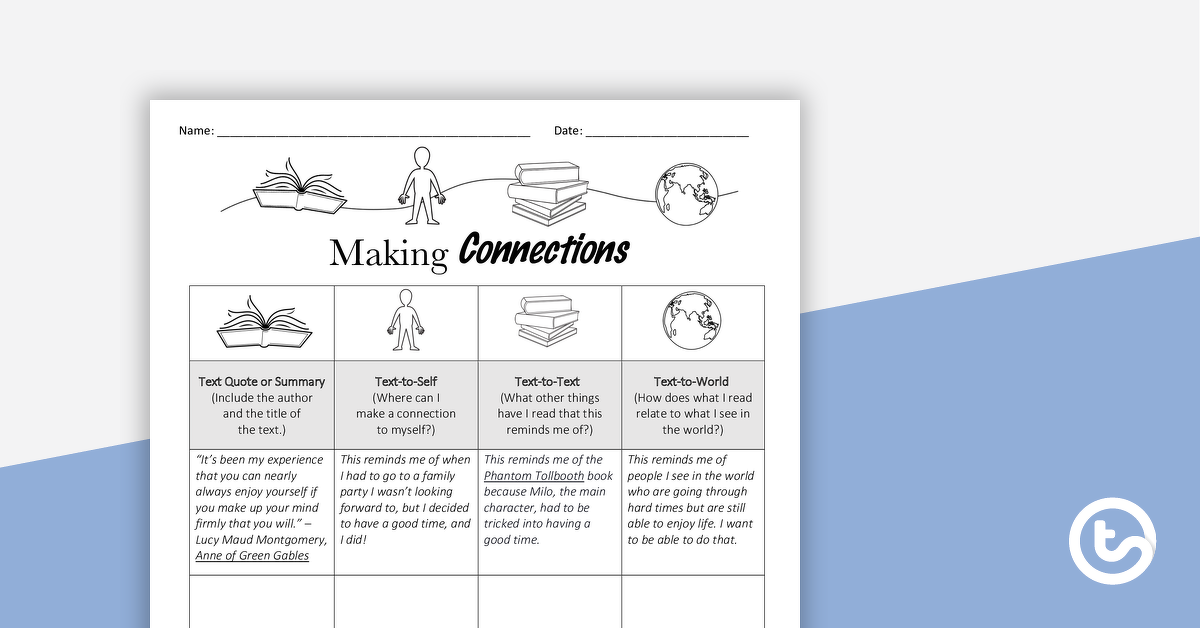
teaching resource
Making Connections Grid
A worksheet for students to practise making connections with a piece of text.
-
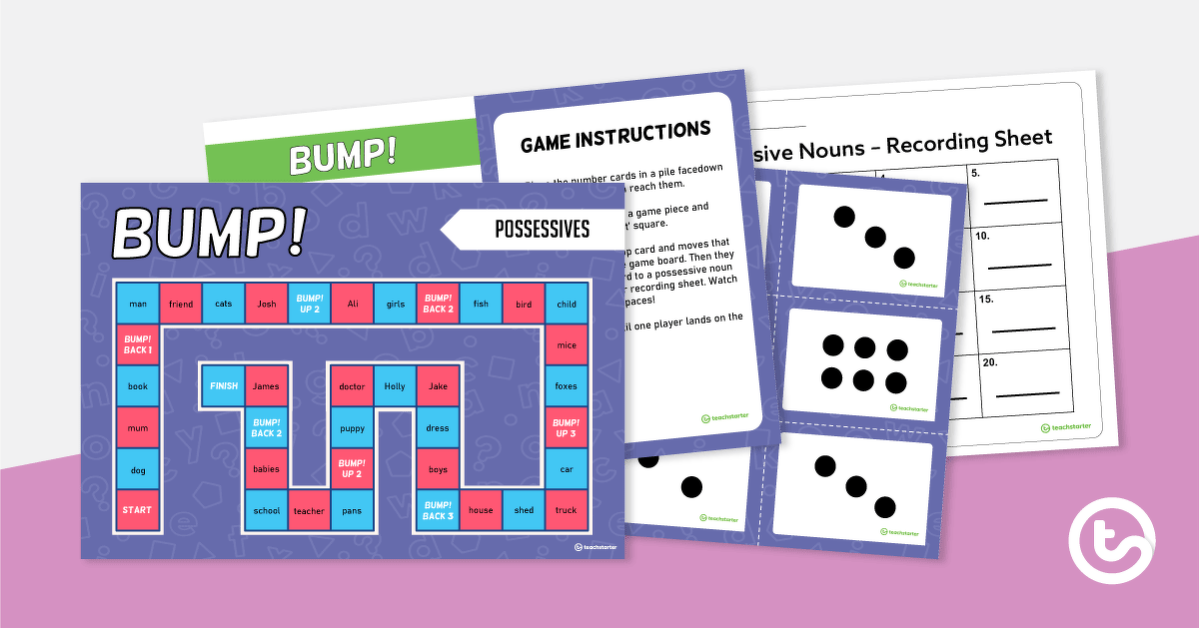
teaching resource
BUMP! Possessive Nouns – Board Game
A board game to practise writing possessive nouns using apostrophes.
-
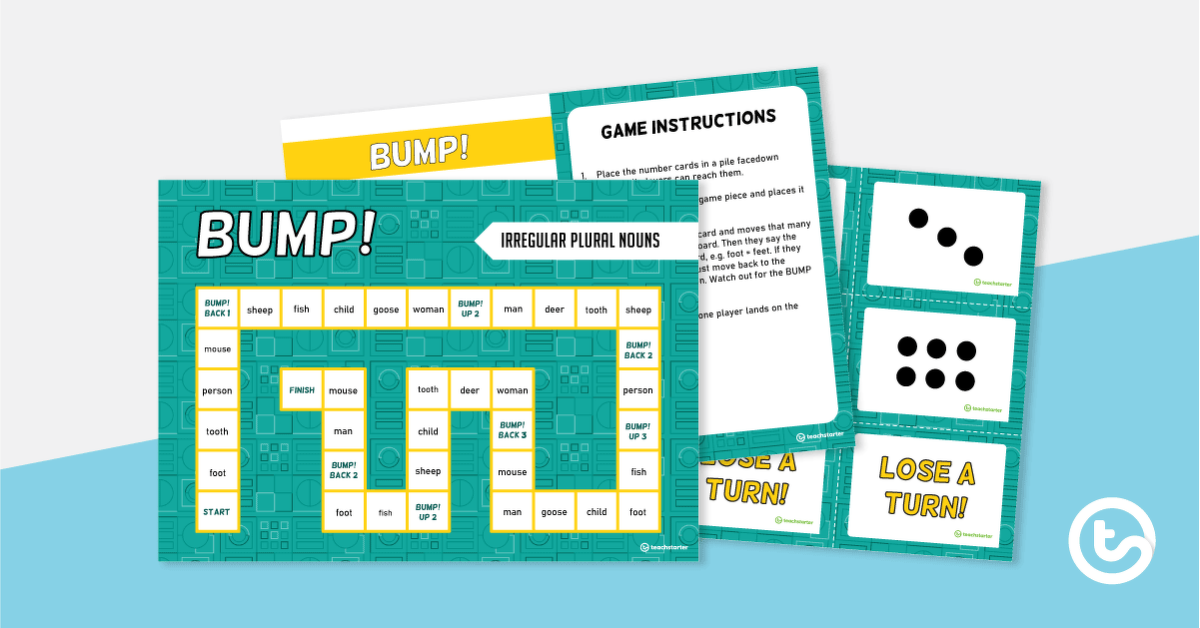
teaching resource
BUMP! Irregular Plural Nouns – Board Game
A board game to practise forming irregular plural nouns.
-

teaching resource
Talking About Books Prompts
A prompt for students to use when orally discussing books.
-

teaching resource
Reading Preferences Survey
A survey for students to complete to gain greater understanding of the types of texts they like to read.
-
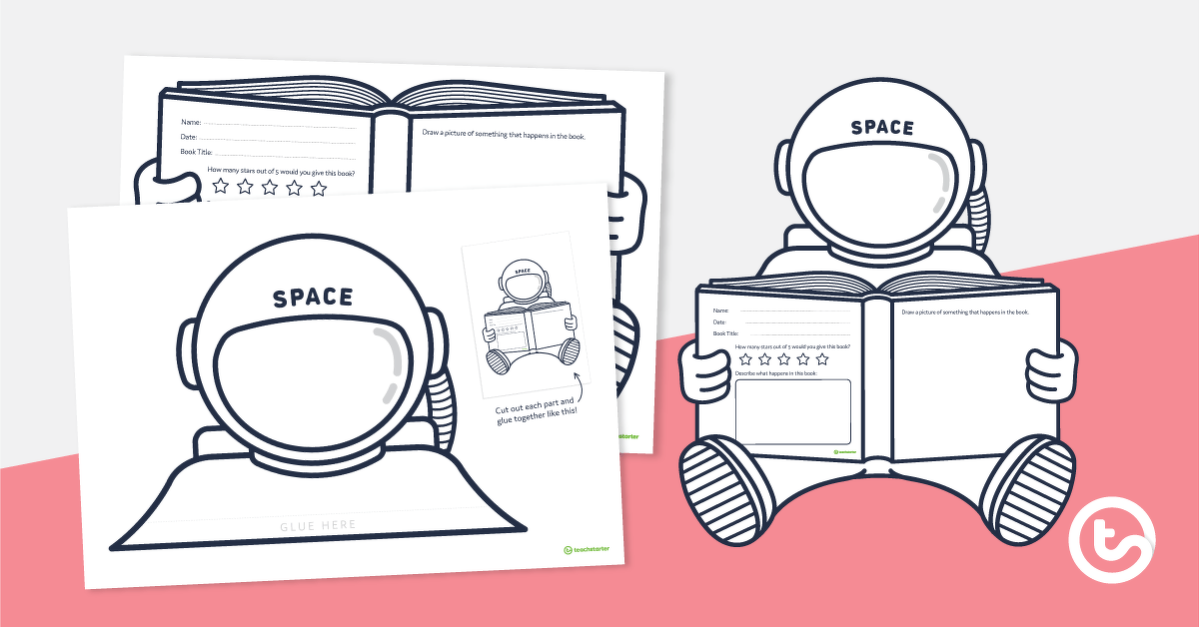
teaching resource
Astronaut Book Report Template
A fun book report template for students to review their favourite book.
-

teaching resource
Fox Book Report Template
A fun fox book report template for your students to use when giving their opinion of a book.
-

teaching resource
Figurative Language Task Cards
A set of 12 task cards to practice working with figurative language.
-
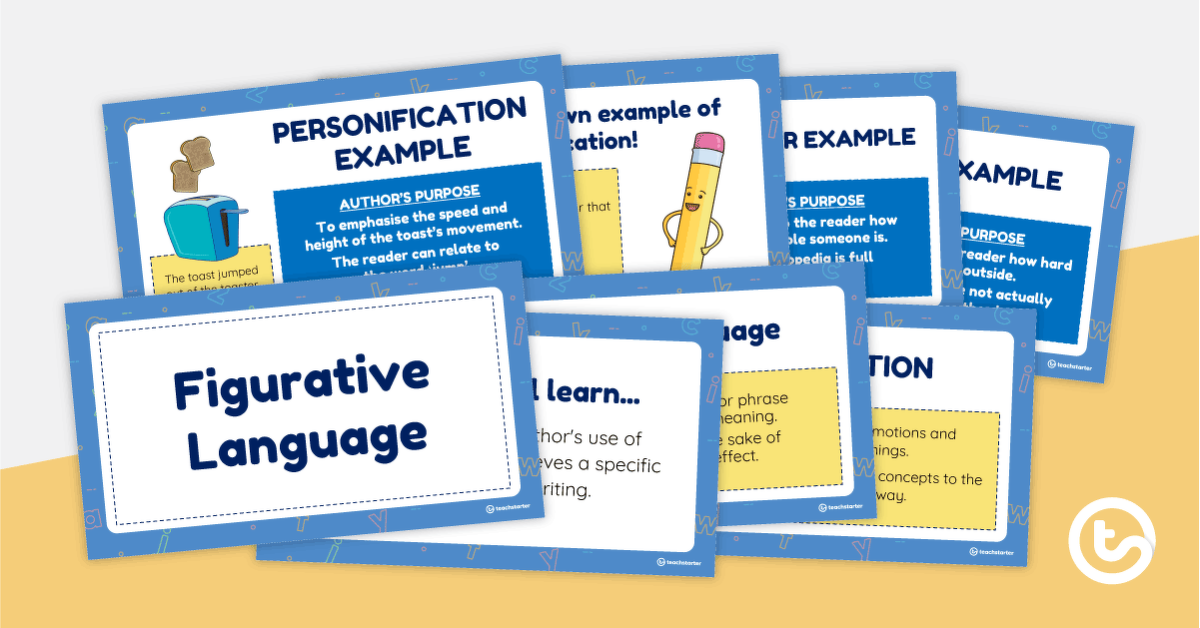
teaching resource
Figurative Language PowerPoint
An editable PowerPoint template to use when teaching figurative language.
-

teaching resource
Figurative Language Sorting Activity
A set of 28 figurative language example cards to use in a sorting activity.
-
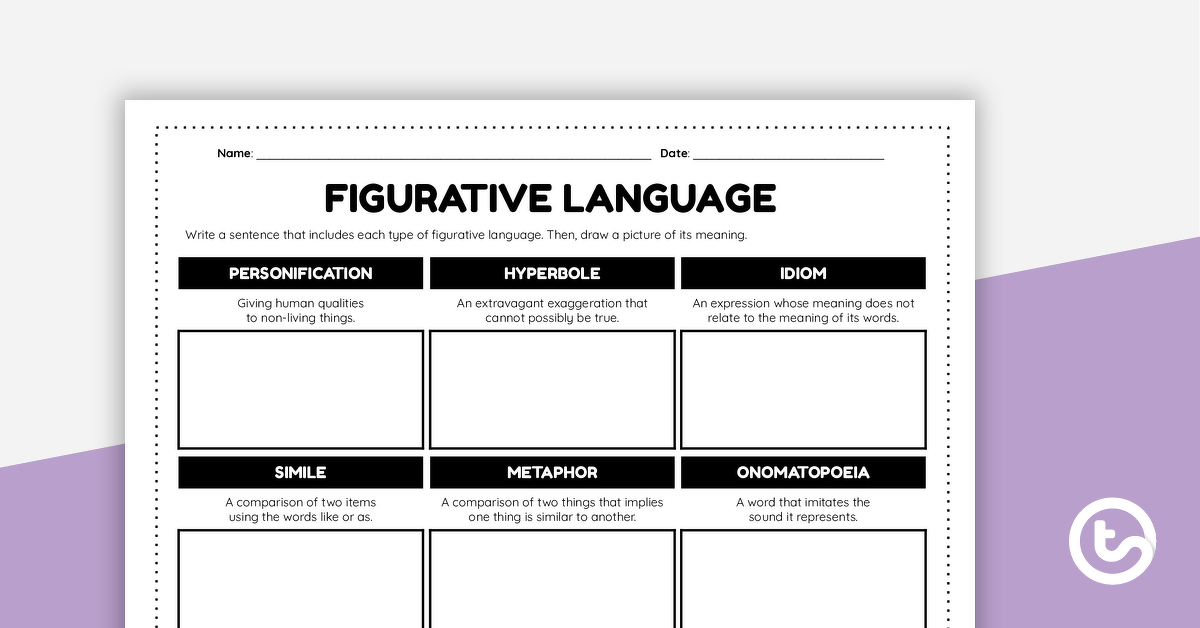
teaching resource
Figurative Language Worksheet
A worksheet that can be used in multiple ways when teaching figurative language.
-

teaching resource
Read and Colour Worksheet – Possessive Nouns
Practise identifying possessive nouns with this worksheet.
-
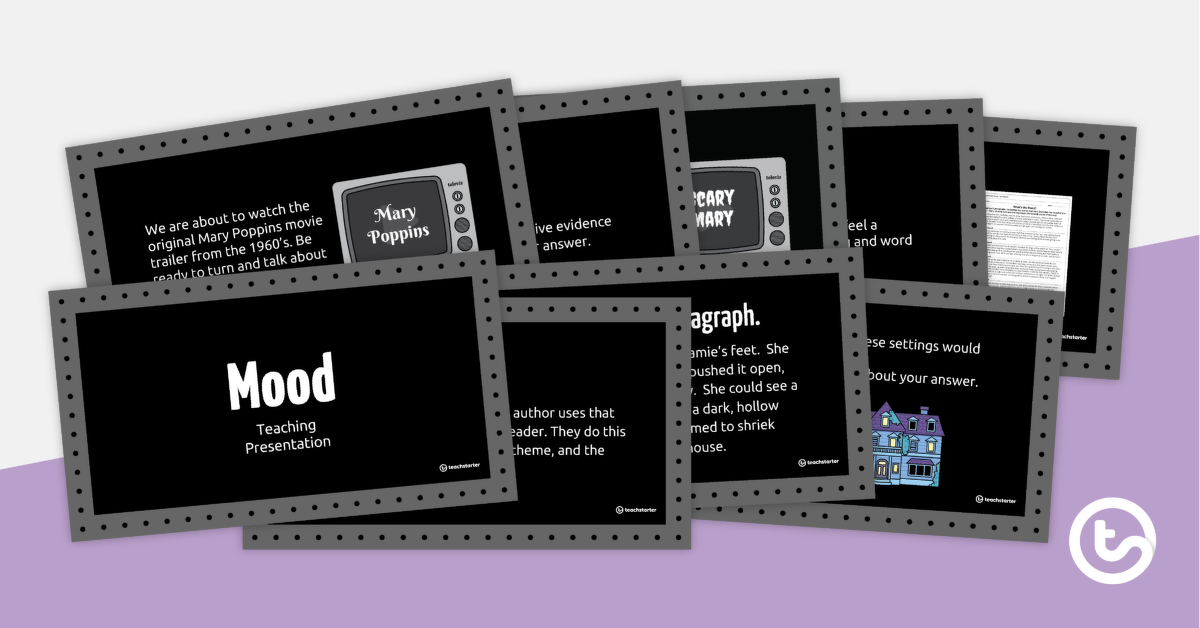
teaching resource
Literary Mood – Teaching Presentation
An editable PowerPoint presentation to use when teaching mood.
-

teaching resource
解释文本写作助教sk – How Does a Plane Fly?
A scaffolded writing task for students to complete when learning about the explanation text type.
-

teaching resource
解释文本写作助教sk – Why Do Volcanoes Erupt?
A scaffolded writing task for students to complete when learning about the explanation text type.
-
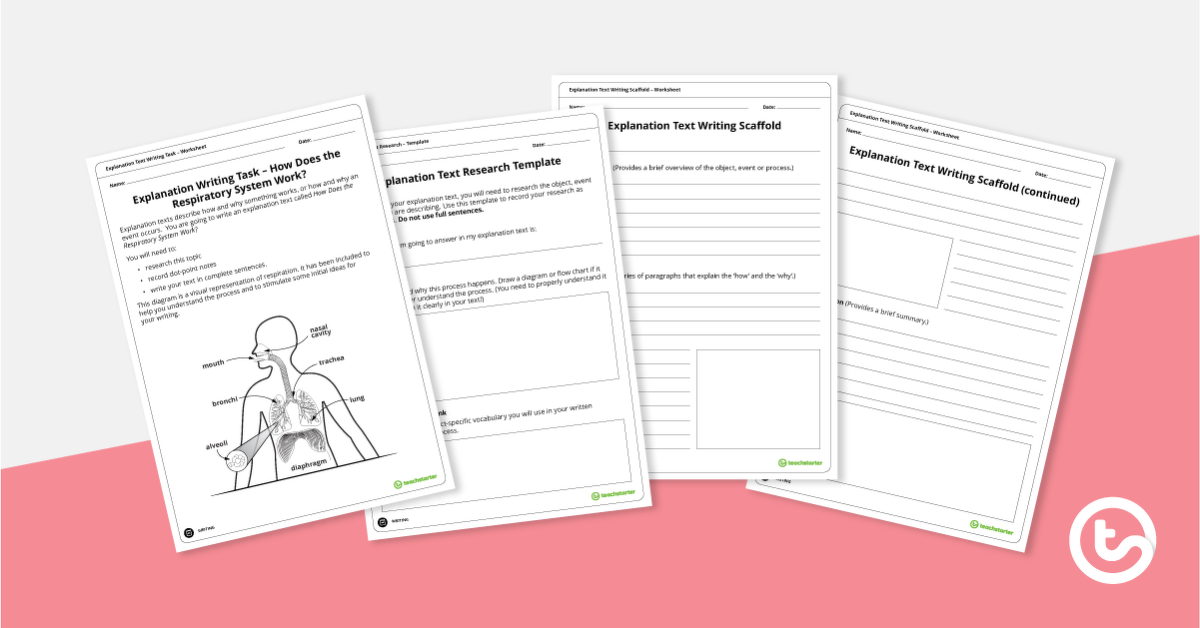
teaching resource
解释文本写作助教sk – How Does the Respiratory System Work?
A scaffolded writing task for students to complete when learning about the explanation text type.
-

teaching resource
解释文本写作助教sk – How Does the Water Cycle Work?
A scaffolded writing task for students to complete when learning about the explanation text type.
-
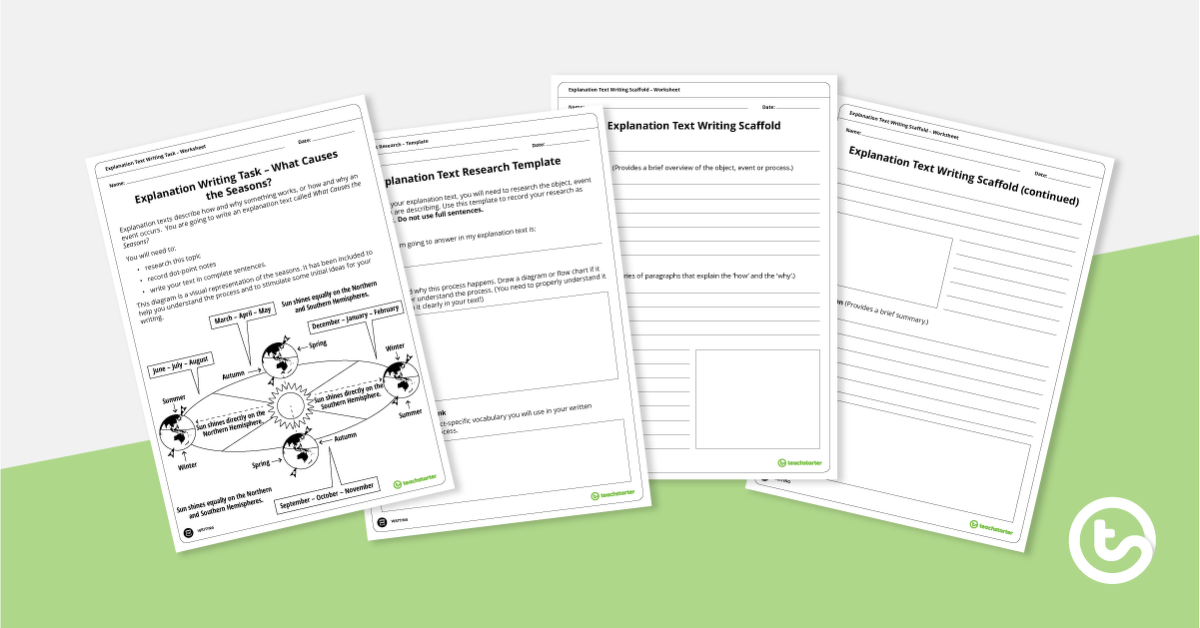
teaching resource
解释文本写作助教sk – What Causes the Seasons?
A scaffolded writing task for students to complete when learning about the explanation text type.
-
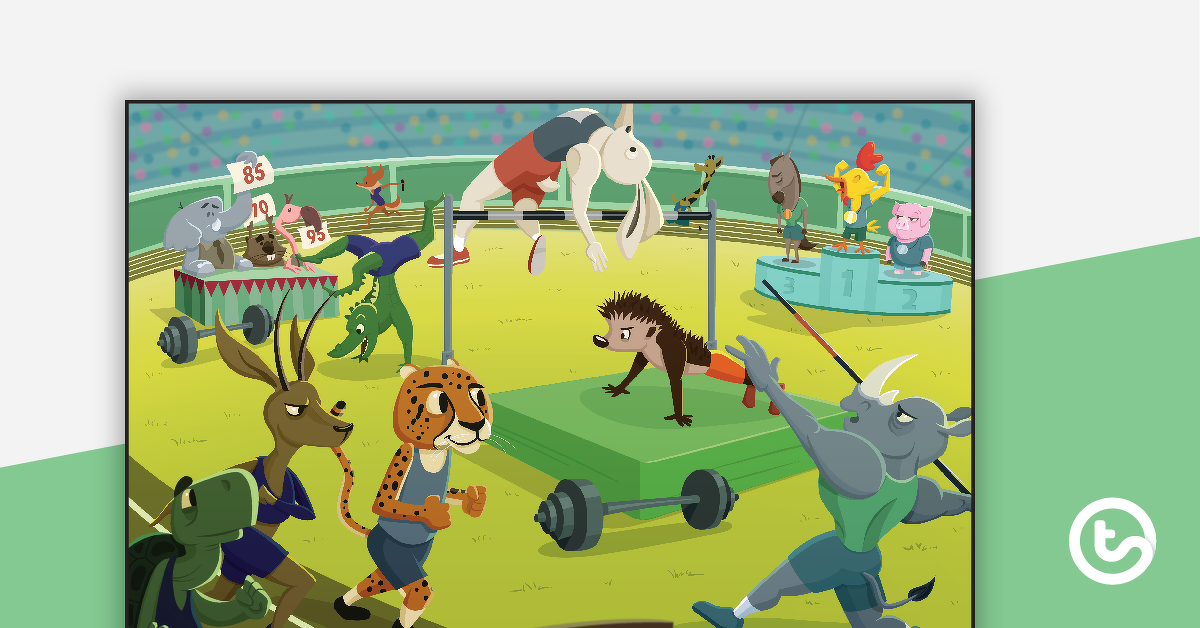
teaching resource
Inference Scenario - The Animal Games Worksheet
Part of a series of inference scenario worksheets to use when teaching your students how to infer information from images.
-

teaching resource
Explanation Text Research Template
A research template for students to use when writing an explanation text.
-
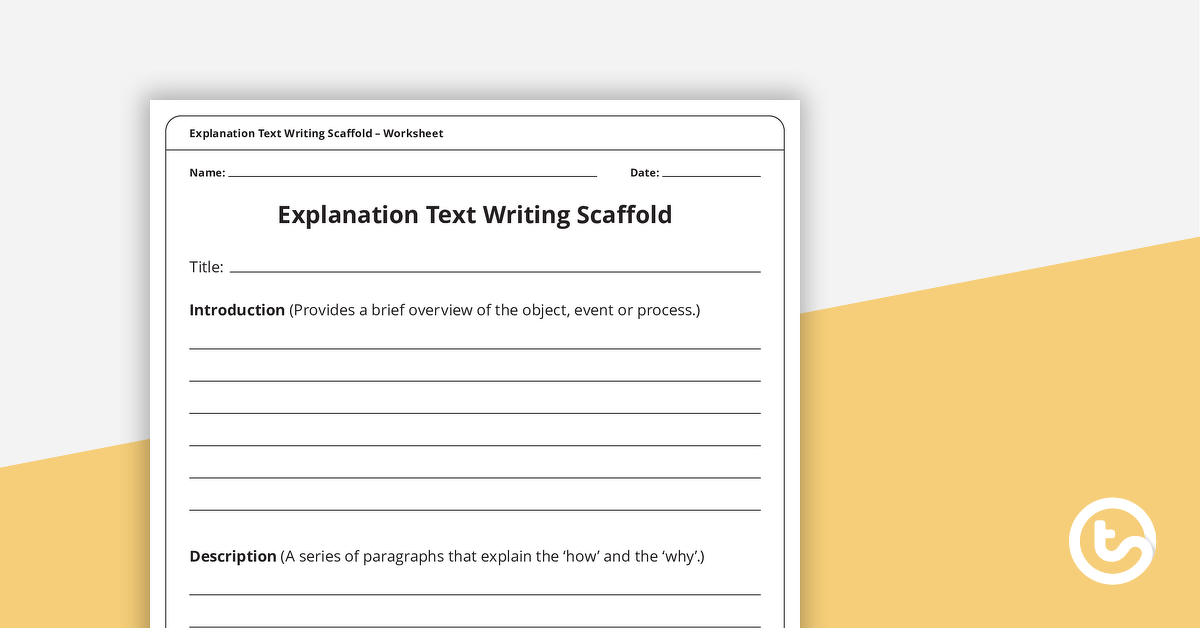
teaching resource
Explanation Texts Writing Scaffold
A scaffolding sheet that can be used to write an explanation text.
-

teaching resource
Writing Explanation Texts PowerPoint
A 33-slide editable PowerPoint template to use when teaching your students about explanation writing.
-

teaching resource
Explanation Writing Checklist – Structure, Language and Features
A checklist for students to use when proofreading and editing their explanation writing.
-
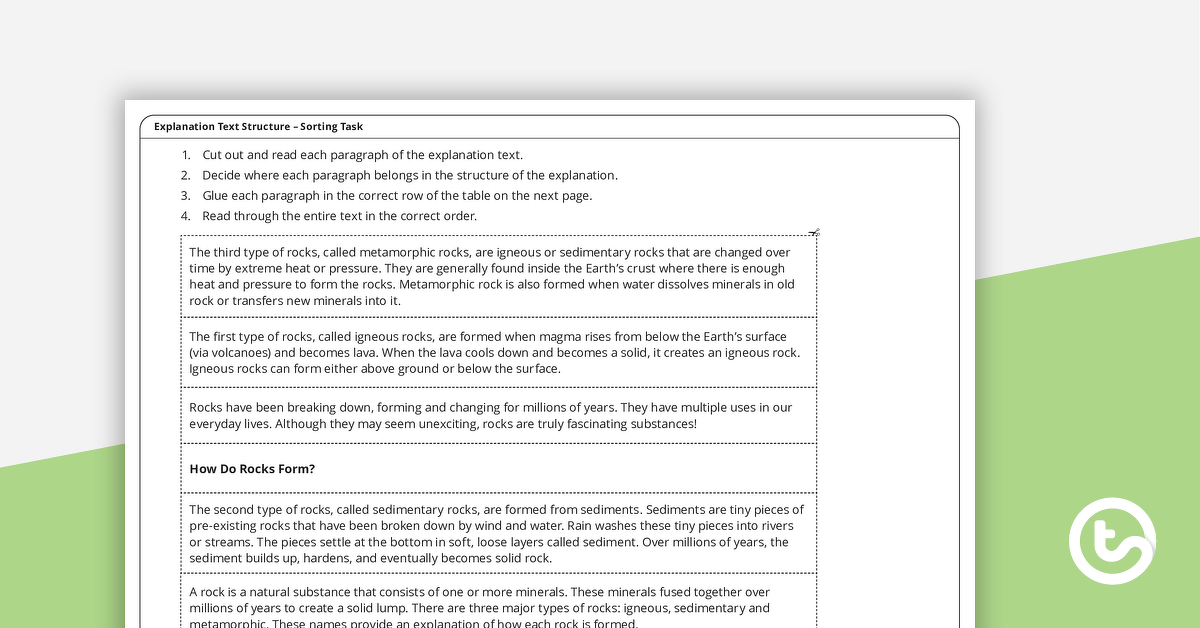
teaching resource
How Do Rocks Form? – Explanation Text Structure Sorting Task
A sorting task to help students learn about the structure of an explanation text.
